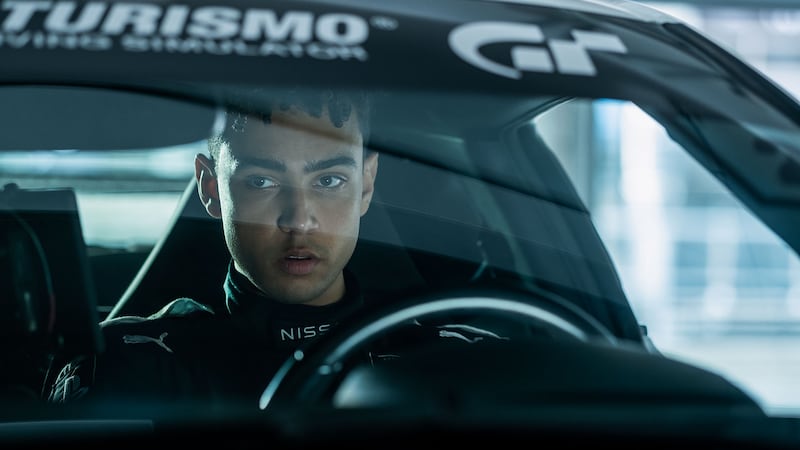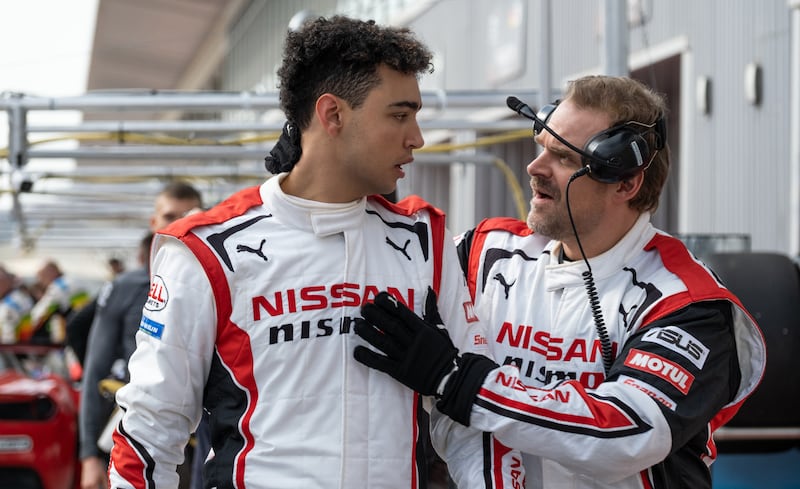Jann Mardenborough can remember the first time he played Gran Turismo, the generation-defining, 90-million-seller driving simulator created by Kazunori Yamauchi in 1997. On one fateful Bonfire Night in his native Cardiff, the youngster took refuge from the pyrotechnics and a neighbourhood party attended by his mum, Lesley, and dad, Steve.
“I never personally bought Gran Turismo,” says Mardenborough, smiling. “When I was eight years old family friends were hosting some fireworks displays across the road from where I lived. I didn’t like loud noises and I didn’t like socialising. Nobody does at that age. So I played Gran Turismo on the PlayStation. Weird. But I vividly remember the car I had. A lilac Mitsubishi 3000 GT.
“After that day I would come home from school and always go over to the neighbours’ house to play. Eventually they gave me the PlayStation and the game. And that’s where my fascination for cars just expanded. I had access to all these different models and makes that you couldn’t see on the streets in the UK.”
And so the obsession that forms the heart of the exhilarating new film Gran Turismo was born.
READ MORE
Mardenborough’s father, a professional footballer who played for Coventry and Wolverhampton Wanderers, would have preferred to see the youngster kicking a ball, but no one could deny Jann’s dedication. As a teenager he built his own simulator rig to further his already impressive skills.
“When I was doing my design-and-technology A level I had to pick a brief from eight design briefs,” says Mardenborough. “I wanted a simulator rig, but I was 17. I couldn’t afford it. So I picked a design brief and built a frame from MDF and painted it in an art-deco style. My parents wanted to incentivise me to do well, so they said, ‘Okay, if you get good results we will give you some money. I got £300, and I used that to buy the wheel and pedal to complete the rig. And that’s what I used to qualify for the academy.”
The academy is the Nissan PlayStation GT Academy. In 2011 Mardenborough beat 90,000 other PlayStation fans to win a shot at a real-life professional racing career. At 19 he became the youngest GT Academy winner and was rewarded with a drive for Nissan at the Dubai 24-hour race. He placed third in his class and has subsequently competed in Formula 3, GT4, Blancpain, British GT and Super GT. Within two years of his “graduation” he finished on the podium at the 24 Hours of Le Mans.
With the helmet on, your head could weigh 24kg sometimes. That’s why racing drivers have quite big necks. Your body takes a pounding. Your heart rate is a minimum of 150 beats per minute. And it stays at that rate for hours
The switch from consul to clocking 300km/h around Silverstone’s Grand Prix circuit was, initially, a steep learning curve.
“I love the sensation that you get from a racing car,” says Mardenborough. “The downforce, the G-force, the vibrations; it’s intoxicating bliss for me. Of course, you have to be physically strong. You have to have muscles in certain areas that normal people don’t have. Your head can weigh four times the weight that it normally does. So with the helmet on, your head could weigh 24kg sometimes. That’s why racing drivers have quite big necks. Your body takes a pounding. Your heart rate is a minimum of 150 beats per minute. And it stays at that rate for hours. And you can burn 1,000 calories in two hours. It’s not just sitting down and driving. You are really wrestling a machine.”

The finances behind high-stakes, competitive motorsports are eye-watering. Unsurprisingly, the moneyed classes weren’t always welcoming to the gaming graduate from Wales.
“I remember getting kitted out after winning the academy,” says Mardenborough. “Fireproof underwear, helmet, gloves. I was shocked at how expensive things were. The socks are £75. And you have three pairs of them. The cost for just basic stuff which you need to go racing is astronomical. And then you have the price of cars, the price of equipment. So, okay, there are some rich people around me. There are people who spend thousands as a cost of entry. But I’m here to go racing. I don’t care. I’ve sometimes experienced a lack of respect. It’s fine. It’s part of the game. I know that I’m there on merit. I’ve raced at the highest levels in Japan and in Europe.”
The idea that you follow your dreams and live happily ever after with your family and your girlfriend is not life. It’s not easy to talk about
Mardenborough’s transformation from gamer to podium driver certainly sounds like the plot of a movie.
In the film Gran Turismo, which is based on his career, he is played by Archie Madekwe, the young actor who features alongside Jason Momoa in See, on Apple TV+. Geri Halliwell – racing royalty because of her marriage to Christian Horner, the principal of the Red Bull Formula 1 team – and Djimon Hounsou play Mardenborough’s concerned parents as the teenager is plucked from obscurity and moulded into a contender by the former Nissan Europe boss Darren Cox (Orlando Bloom) and a retired driver named Jack Salter (David Harbour).
It was a surreal experience for Mardenborough, who was also a producer and stunt driver on the film.
“All I cared about for years was making sure that my progression as a race driver is exponential,” he says. “I’m not on Instagram or YouTube, doing videos. I’m quite grounded. I had some very good people around me to make sure my head isn’t in the clouds. So it’s very weird meeting all these people interested in you and your life. I came on set and I was Real Jann and Archie was Jann. Everybody knew who I was.”

Mardenborough was keen that the film be partly shot in Cardiff and that the script include a horrific early crash at the Nürburgring that killed a spectator.
“It would have been a disservice to the viewer not to include it,” he says. “The idea that you follow your dreams and live happily ever after with your family and your girlfriend is not life. It’s not easy to talk about. It was the darkest moment of my personal and professional life.”
The film’s director, Neill Blomkamp, who was nominated for an Oscar for his work on District 9, employed a series of drones to craft realistic racing scenes. Most racing films use static cameras, so that a car travelling at 50km/h looks crazily fast. Blomkamp used swooping helicopters, real tracks and carefully choreographed cars travelling at 260km/h. The film-maker’s attention to detail even required an exact replica of Mardenborough’s old art-deco rig.
“Mr Longville, my teacher, only gave me a B for that project,” he says with a laugh. “To this day I’m not happy about it.”
Gran Turismo is on general release from today





















